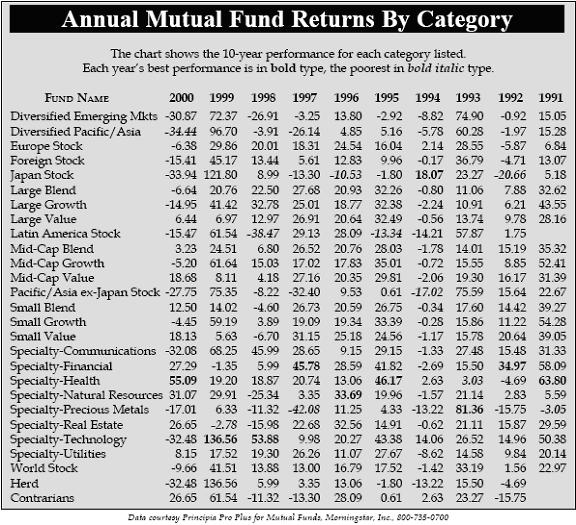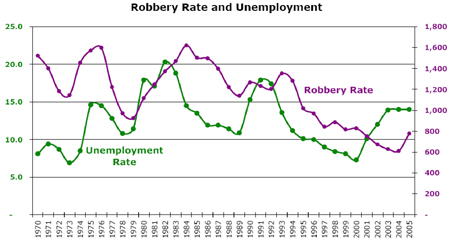Are conventional mutual funds dead? With more than 11,000 funds in the Morningstar database, totaling an estimated $5 trillion in assets, it is hard to imagine why anyone might think so. That is, unless you happen to read some of the more breathless hype for the latest and greatest approach to pooled investing, the “exchange-traded fund.”
Until recently, the mutual fund world was divided neatly into open-end funds, which are issued to and redeemed from investors by the fund companies at net asset value (give or take a sales charge), and closed-end funds, which trade on the major stock exchanges. Closed-end funds generally have static portfolios and trade at a discount or premium to their net asset value, according to investor enthusiasm for whatever the fund happens to hold.
Exchanged-traded funds, or ETFs, are a hybrid of the open- and closed-end mutual fund. Shares can be bought and sold in the stock market at prices that are almost always very close to net asset value. This is because the fund sponsors stand ready to create and redeem shares, but only in very large increments that institutional traders would use to capture any discount or premium that happens to momentarily arise.
Proponents of ETFs say they are better than conventional mutual funds because: 1) They are cheaper; 2) You can buy or sell them at current market prices whenever the markets are open, rather than waiting for the day’s closing price as is typical with open-end funds; 3) They are cheaper; 4) You can use them for short sales and other hedging transactions; 5) You can trade them as often as you like without incurring short-term redemption fees or other expressions of the fund manager’s wrath; and, most importantly, 6) They are cheaper.
At Palisades Hudson Asset Management, Inc., we operate on the principle that most individuals should be long-term investors, not short-term traders, so the fact that ETFs lend themselves to short-term trading does not impress us much. Besides, those trades will cost money in commissions, which can add up quickly.
A Better Way to Index
We also think investors should use indexes to obtain much, if not all, of their diversified exposure to efficient markets. (See Should Fund Managers Be Expected To Outrun The Bulls? Sentinel, May 1998. Archived articles are available at www.elkin.com.) The most efficient market in the world is the market for shares in large American public corporations. Not surprisingly, this is the arena in which ETFs — which, for the most part, are index funds — are making their biggest splash.
But is an ETF really cheaper than a conventional mutual fund? And, if it is cheaper, does that make it a better way to invest? Sometimes.
All else being equal, of course, you want to pay as little to operate your mutual fund or ETF as possible. In the mutual fund world, retail investors in the Vanguard 500 Index fund get a great deal by paying only 18 basis points (a basis point is one-hundredth of one percent) per year to own a portfolio that mirrors the Standard & Poor’s 500 stock index. We have often used a similar fund from Charles Schwab for institutional money management clients that drains only 15 basis points for expenses.
Barclays Global Investors has an ETF that tops both of these conventional mutual funds in the expense contest. Its iShares S&P 500 Index (American Stock Exchange:IVV) charges investors only 9.5 basis points, just over half the Vanguard expense. Responding to the competition, Vanguard has announced plans to offer its own line of ETFs under the Vipers brand name.
So, for many investors who want to own the S&P 500 index, the iShares ETF is a less expensive vehicle than a conventional mutual fund. But iShares is not the best answer for everyone. If you want to make small investments every month, which is the time-honored technique called dollar-cost averaging, the iShares will generate significant commission costs, while a mutual fund can be bought for free. Or, if you have at least $10 million to put into the S&P 500, Vanguard will sell you an institutional index fund that has annual expenses of only 6 basis points.
Keeping An Eye On Costs
Although ETFs are getting considerable good press for their perceived cost advantages, we wonder how long the advantage is likely to hold up. For any mutual fund, including an ETF, the big drivers are the actual cost of operating the fund and the amount that the money manager takes from the fund as compensation. Fund advisers have considerable latitude to keep their ETF management fees low initially, while the products gain market share, and eventually increase the fees once the ETFs are established. By that time, given good investment performance, many investors may feel locked into the ETF by the capital gains taxes they would incur if they choose to sell. Only time will tell whether managers will keep their ETF fees low.
The actual costs of operating an ETF or a mutual fund are largely outside the fund sponsor’s control. ETFs do have an advantage in this area, since they do not bear the expense of opening, maintaining and closing thousands or millions of accounts for small investors. This burden falls to the brokers through whom the ETFs are bought and sold. However, the ETF cost advantage is not very big. We think it might range between 10 and 30 basis points for a good-size fund. That’s noteworthy, but it will not necessarily be reason enough to buy an ETF.
ETFs can make good vehicles to implement an indexing strategy. There are some markets, however, where indexing makes less sense. These are the less efficient markets, places where a knowledgeable manager can be expected to add significant value over the long haul. We generally do not index developing markets such as Brazil or Mexico, nor developed markets like Japan where the quality of corporate financial disclosure is suspect. In these places, we want an active manager on the scene.
If ETFs begin making serious inroads into the business of actively managed mutual funds, we can expect to see those managers take their products onto the stock exchanges, too. That is going to be a tricky proposition, however. How can the investor know what price to pay for an ETF if she does not know what stocks she is buying? The ETF manager probably would have to make frequent, if not continuous, disclosure of holdings and transactions. But any large fund that operates so transparently is going to find hordes of small investors jumping into and out of the stocks the fund manager is trading, hoping to "front-run" the manager’s trades and profit from the resulting price movements.
ETFs offer an economical way to make bets on certain industry sectors and specific countries’ stock markets. For example, the Financial Select Sector Spider (ASE:XLF) is designed to replicate the market-weighted return of all 71 financial stocks in the S&P 500 index. The current expense ratio for this ETF is 28 basis points, compared to the 166 basis points charged by the average financial sector mutual fund. Internationally, where many actively managed mutual funds have expense ratios of 125 to 200 basis points, Barclays plans to offer 23 iShare ETFs with annual expenses ranging from 84 basis points in developed markets, such as Germany, to 99 basis points in emerging markets, such as South Africa. Investors in these markets will need to decide whether active managers can be expected to earn back the higher costs through their stock-picking prowess.
We are happy to have the ETF in our tool kit. We expect some of these publicly traded funds will make their way into many of our clients’ portfolios. But, as with any tool, it is important to know how to use it, or somebody can get hurt.








